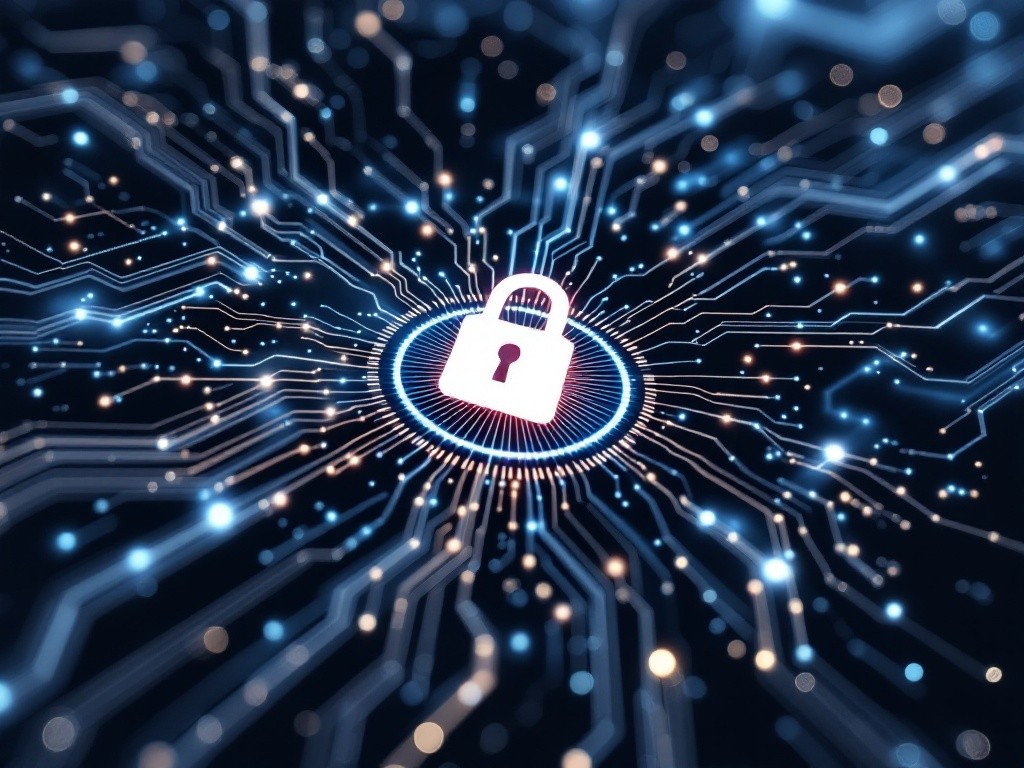SOC 2
SOC 2: A Comprehensive Guide to Compliance and SOC 2 Audits
Mar 21, 2025
8
min read
SOC 2 compliance is increasingly becoming a critical aspect for organizations that handle sensitive customer data, as they need a SOC 2 report to validate their security practices. This comprehensive guide will delve into the nuances of SOC 2, covering its origins, differences from SOC 1, and the importance of audits in achieving compliance. Understanding SOC 2 is not just essential for meeting regulatory requirements; it also enhances the overall security posture of an organization, ensuring that data security measures are robust and reliable.
Guide to Compliance: What is SOC 1 and SOC 2?
In this chapter, we will answer some frequently asked questions about SOC 2, SOC 1, and beyond.
Types of SOC: SOC 1 vs SOC 2, SOC audits
Understanding the difference between SOC 1 and SOC 2 is crucial for organizations aiming to achieve compliance. A SOC 1 audit revolves around internal controls over financial reporting, whereas SOC 2 focuses on a broader spectrum of information and IT security practices. The SOC 2 audit is structured around the five Trust Services Criteria, making it more relevant for organizations that prioritize operational integrity and compliance with data security requirements. This distinction is vital for businesses looking to align their audits with the specific needs of their operations and client expectations.
What is SOC 2 Compliance?
SOC 2 compliance is a voluntary standard (which means SOC 2 is not legally required) that helps service organizations manage customer data effectively. It refers to both the security framework and the audit that checks whether a company is compliant with SOC 2 requirements. The standard is grounded in the five Trust Services Criteria: security, availability, processing integrity, confidentiality, and privacy. A SOC 2 audit report is tailored to reflect the unique operational practices of each organization, allowing them to design specific controls that cater to one or more principles of trust, ultimately leading to a SOC 2 attestation. These internal reports are invaluable for organizations in demonstrating their commitment to data security and compliance. Apart from that, SOC 2 can help win more business and stand out from competition.
History of SOC 2: It Started with AICPA
The introduction of SOC 2 by the AICPA (the American Institute of Certified Public Accountants) in 2010 marked a significant response to the rising demand for companies to validate their cybersecurity posture. As the digital landscape evolved, so did the need for standards that could assure clients of the security measures in place. The establishment of SOC 2 was a pivotal moment, as it provided a framework that specifically addressed the growing concerns surrounding information security and data management, paving the way for enhanced trust between service providers and their clients.
SOC 2 Audit Types and Processes
SOC 2 Type 1 vs Type 2
Understanding the differences between SOC 2 Type 1 and Type 2 is critical for organizations aiming to achieve SOC 2 compliance. A SOC 2 Type 1 audit evaluates the effectiveness of security controls at a specific point in time, essentially asking whether the controls are designed properly. In contrast, a SOC 2 Type 2 audit goes further by assessing how those same controls function over an extended period, typically between 3 to 12 months, providing deeper insights into compliance with the SOC 2 framework. This type of audit answers whether the security controls are operationally effective throughout the review period. Organizations may choose between these two types of SOC 2 reports based on their specific compliance needs and operational maturity.
SOC 2 Audit Process Overview
The SOC 2 audit process is a comprehensive evaluation of an organization’s information security practices, focusing on a range of factors such as security, availability, confidentiality, and processing integrity. To initiate the SOC 2 audit, an organization must engage a qualified third-party auditor who will conduct an evaluation of its policies and practices against the SOC 2 criteria. This external audit serves as an essential validation of the organization’s security posture. Completing a SOC 2 audit not only helps to ensure that sensitive customer data is protected but also provides a structured approach to achieving SOC 2 compliance, ultimately resulting in a SOC 2 report that reflects the organization’s commitment to data security.
Benefits of SOC 2 Audits
Organizations that undergo SOC 2 audits reap numerous benefits, particularly in terms of enhancing their information security practices. Compliance with SOC 2 requirements signifies a commitment to maintaining high information security standards, which is increasingly important in today’s digital landscape. The strict compliance requirements, assessed through on-site audits, ensure that sensitive information is handled responsibly, thus reducing the risk associated with data breaches. Moreover, being SOC 2 compliant can provide a competitive advantage, as clients and stakeholders are more likely to trust organizations that demonstrate robust security measures. In essence, the benefits of SOC 2 compliance extend beyond mere regulatory adherence; they foster a culture of security that benefits both the organization and its customers, reinforcing the trust that SOC 2 stands for.
SOC 2 Reports: What You Need to Know
Understanding SOC 2 Reports: Who Needs a SOC 2 Audit, and When
A SOC 2 report is a critical document that verifies your organization’s compliance with the stringent SOC 2 standards laid out by the American Institute of Certified Public Accountants (AICPA). This report serves as a comprehensive evaluation of how effectively your organization protects sensitive data, focusing on key criteria such as security, availability, and confidentiality. By undergoing a SOC 2 audit, you gain an objective assessment of your security posture, detailing whether your organization meets the established SOC 2 criteria and demonstrating your commitment to maintaining high information security standards.
SOC 2 Type 2 Report vs SOC 2 Type 1 Report
When it comes to SOC 2 reports, understanding the differences between SOC 2 Type 1 and SOC 2 Type 2 reports is essential for organizations. A SOC 2 Type 1 report provides a snapshot of your security controls at a specific point in time, confirming that the necessary controls are implemented but not assessing their effectiveness. On the other hand, a SOC 2 Type 2 report evaluates the same security controls over an extended period, typically between 3 to 12 months. This type 2 audit determines not only if the controls are in place but also how well they function, providing a more comprehensive view of an organization’s security posture.
SOC 3 Audits and Reports Explained
To receive a SOC 3 report, an organization must first successfully obtain a SOC 2 final report. The SOC 3 report serves as a public-facing version of the SOC 2 report, suitable for distribution without the necessity of a non-disclosure agreement (NDA). This report is designed to cater to a broader audience by omitting sensitive information while still conveying the essential details about your organization’s compliance with SOC 2 standards. As a result, a SOC 3 report can be a valuable tool for marketing and sales, helping organizations demonstrate their commitment to information security and potentially attracting new clients.
SOC 2 Requirements and Automation
SOC 2 Compliance: What is Required for SOC 2?
Achieving SOC 2 compliance requires organizations to manage customer data in accordance with the five Trust Services Criteria: security, availability, processing integrity, confidentiality, and privacy. These compliance requirements are critical, as customers increasingly prefer service providers that adhere to all five SOC 2 principles, signifying a strong commitment to securing their information demonstrating their understanding of SOC 2 trust. Meeting these requirements not only enhances your organization’s security posture but also builds trust with clients, ensuring that their data is handled responsibly and in accordance with established standards. SOC 2 examinations should be performed by a trusted third-party auditor.
Preparing for SOC 2 Readiness Assessment
Before initiating the SOC 2 audit process, it is vital for organizations to prepare adequately to avoid delays or unexpected costs. Conducting a SOC 2 readiness assessment helps identify any control gaps that may exist, allowing you to remediate issues prior to the formal audit. This preparation includes reviewing recent organizational changes, creating a timeline for the audit, and gathering necessary evidence ahead of fieldwork to ensure successful SOC 2 audit. By taking these proactive steps, organizations can streamline their SOC 2 audit process and increase the likelihood of a successful outcome.
Compliance Automation in SOC 2
Compliance automation has become an essential tool for organizations striving to meet SOC 2 requirements efficiently. Utilizing compliance automation software allows you to consolidate all audit information into a single system, enabling you to gauge your readiness and streamline tasks such as collecting evidence and managing requests. When selecting compliance automation software for your SOC 2 audit, prioritize options that offer features like automated readiness assessments and auditor assistance to help you become SOC 2 compliant. Such tools can significantly enhance your capacity to monitor your security posture and ensure ongoing compliance with SOC 2 standards.
Maintaining SOC 2 Compliance
Best Practices for Staying SOC 2 Compliant
To maintain SOC 2 compliance, organizations must implement a robust set of policies and procedures that encompass various aspects of information security. Essential practices include establishing stringent access control measures, effective change management systems, and regular risk assessments to identify vulnerabilities. Incident response plans should be well-documented and rehearsed to ensure preparedness against potential security breaches. Additionally, business continuity plans are crucial for mitigating risks during unforeseen events. Regularly reviewing and updating these practices is fundamental to ensure ongoing adherence to SOC 2 standards, thus reinforcing the organization’s security posture.
Common Challenges in SOC 2 Compliance
Organizations often encounter several challenges in achieving and maintaining SOC 2 compliance. Resource constraints can limit the ability to implement necessary security controls effectively. A lack of understanding of the SOC 2 requirements can lead to insufficient preparation for audits. Moreover, the complexities involved in integrating controls across various departments can complicate compliance efforts. However, these challenges can be mitigated by utilizing compliance automation tools, which streamline processes and enhance efficiency. Seeking guidance from experienced auditors can also provide valuable insights into best practices, significantly easing the path towards achieving SOC 2 compliance.
Resources for SOC 2 Compliance
Organizations pursuing SOC 2 compliance can leverage a variety of resources to aid their efforts. The SOC 2 Definitive Guide offers comprehensive insights into the compliance framework and best practices. Additionally, comparison guides detailing SOC 1 vs SOC 2 provide clarity on the differences between these types of audits, helping organizations align their compliance strategies effectively. Utilizing templates for SOC 2 policies and procedures ensures that all aspects of compliance are covered. Furthermore, engaging in training sessions and workshops focused on SOC 2 compliance best practices can enhance organizational understanding and operational readiness.
Benefits of SOC 2 Compliance
Competitive Advantages of SOC 2 Compliance
Organizations that successfully complete a SOC 2 assessment gain critical insights into their security posture, which can drive informed decisions regarding cybersecurity investments. This strategic roadmap not only enhances overall security but also positions organizations competitively in the marketplace. A SOC 2 report is particularly crucial for small businesses aiming to scale, demonstrating their commitment to data security, and helping them win larger clients. By showcasing compliance with SOC 2 standards, organizations can differentiate themselves in a crowded market, ultimately leading to increased business opportunities and customer trust.
Trust and Assurance with SOC 2
Achieving SOC 2 compliance significantly enhances trust with customers and stakeholders by showcasing a strong commitment to data security and effective risk management practices. This trust is vital for building long-term customer relationships, as clients feel more secure knowing their sensitive information is well-protected. Furthermore, demonstrating compliance can lead to increased business opportunities, as partners and clients are more likely to engage with organizations that prioritize their data security. Ultimately, SOC 2 compliance fosters a culture of accountability and transparency, reinforcing the organization's reputation in the industry.
Impact on Business Operations
Obtaining a final SOC 2 report can unlock substantial growth opportunities for organizations. It establishes credibility with investors and partners, signaling a sophisticated approach to information security and operational integrity. Compliance not only reassures clients of the organization's commitment to maintaining best-in-class security standards but also enhances its attractiveness in competitive bidding scenarios. By demonstrating adherence to SOC 2 standards, organizations can streamline their operations, reduce risks associated with data breaches, and ultimately create a more resilient business model that supports sustainable growth.
Ensure your security posture remains intact with Tiebreaker AI - start using our intelligent compliance platform today! Contact us at info@tiebreaker-ai.com or schedule a meeting.





